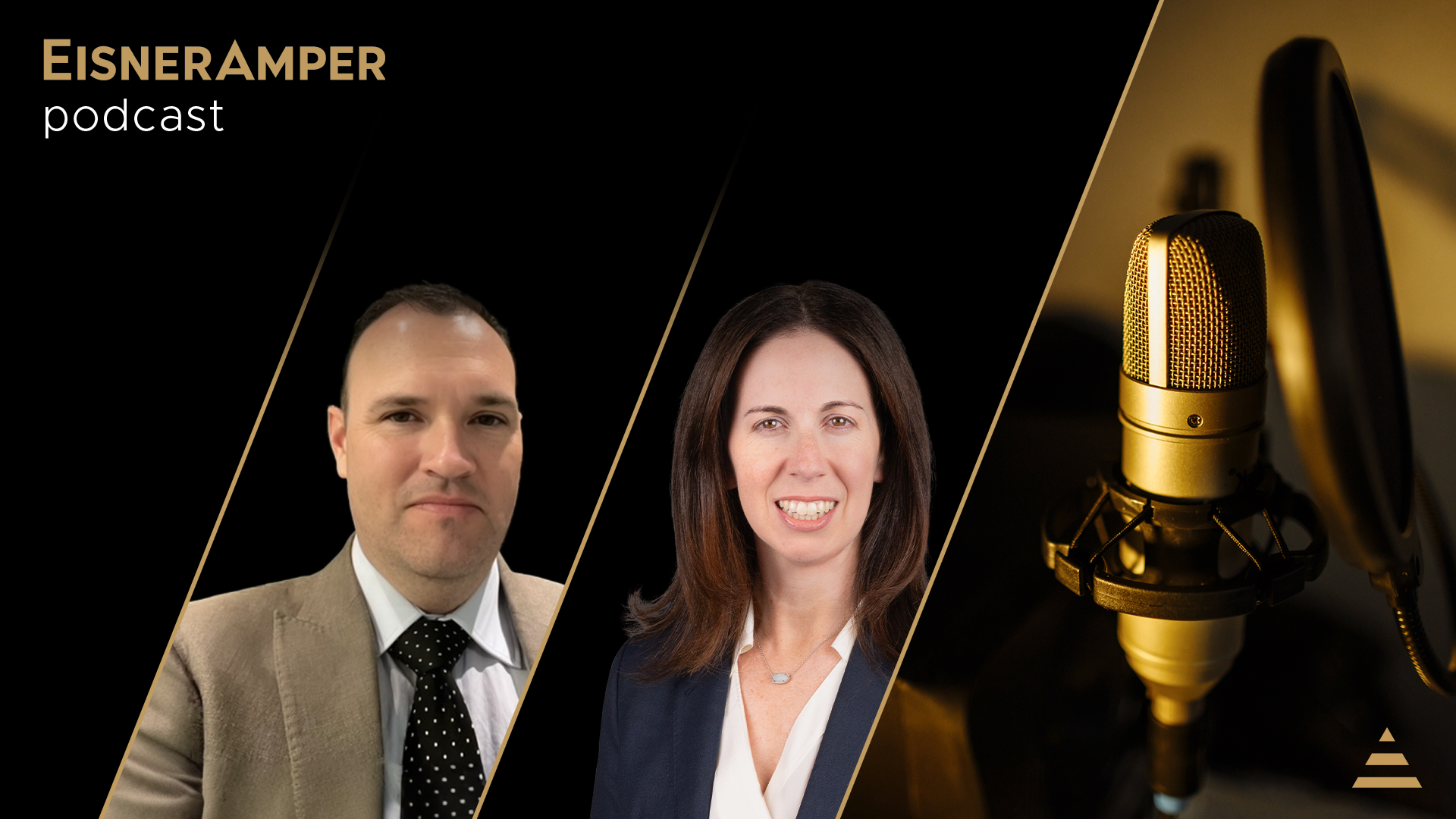
Trends Watch: August 23, 2018
- Published
- Aug 23, 2018
- Share
EisnerAmper’s Trends Watch is a weekly entry to our Alternative Investments Intelligence blog, featuring the views and insights of executives from alternative investment firms. If you’re interested in being featured, please contact Elana Margulies-Snyderman.
This week, Elana talks to Logan M. Cheek, Senior Managing Director, Trailblazers Capital Management.
What are your plans for your firm’s next partnership?
Well, as one about to be inducted into the octogenarians’ club, and given the decade you have to commit to leading any new limited partnership, I’m personally disengaging. But I’m not disengaged. I’ll be very selectively and personally pursuing opportunities of greatest potential, while assisting other partnerships and institutional investors on reforming their approaches and processes.
What is your outlook for alternatives?
I won’t speak to the other sectors, such as LBOs and real estate. Those are totally different from the venture world. Theirs has come to dominate the private equity arena; when I started in this profession in the 1970s, private equity of all types was between 5-10% of the total, and venture capital a very significant portion of that. Just recently, Bloomberg reported that it now exceeds 50%. So, in a real sense, private equity is having a challenging time keeping its cherished privacy.
Most alternative investment opportunities are in cyclical sectors, and in the boom times the oft heard phrase is “too much money chasing too few deals.” I sense that is happening today.
But true venture capital — as practiced by up to a quarter of we venture capitalists — is a totally different kettle of fish. It is free of cycles, because you’re betting on an idea, a technology or a business model that typically takes seven to ten years to make happen, during which times typically at least one, and maybe two cycles will occur. Now, as long as the world has major problems, and you can find or accurately define major solutions to solve them, you can create the deal yourself, and organize, staff, and fund it, while not worrying about the rest of those on the great deal chasing merry-go-round, competing for the too few brass rings.
The successful venture fund managers constantly seek major solutions to major problems and staff them with major league management teams. My approach has been to score each opportunity on a scale of one to ten, then multiply the results. Scores of less than 800 get a pass; over 900 gets the front burner. It’s brutal for most deals, but front burners are called BFDs -- in polite circles, big fantastic deals (OK, big front-burner deals, if you insist.) Successful BFDs result in unicorns.
So how do you execute on this concept?
We have rigorous, proprietary approaches to identify the major sectors of opportunity, find the big problems in those sectors, seek out the solutions, and put together a skilled team. Some examples:
- A big health care problem in India and southern Africa remains AIDS, while it’s no longer on the public health service’s problems in the U.S. – or the developed world for that matter. Critical there, but less so here. On the other hand, in the Middle East, their diabetes epidemic is #1: The petro-countries got wealthy and switched from their traditional lean diets to heavily sugared ones. The price they’re paying is heavy for their exchanging their oil for Swiss and Belgian chocolates and Snickers bars.
- In China and many other parts of Asia, air, ground, and water pollution is the major problem and opportunity. Again, critical elsewhere, but less so here.
- Global warming is just that – global. But the scope of the opportunity in the West is dwarfed by the magnitude of the problem in the developing world.
- Cybersecurity is global, but for the United States, with its highly developed infrastructure and electronic culture, it represents a major problem – and opportunity for our investing community.
After we define and fully vet each opportunity, we seek out a solution, and thoroughly vet its relevance to addressing the problem. Solutions are by no means where you think they may be. In fact, in the last 20 years, we’ve found that for 80% of the opportunities/problems we’ve pursued, somewhere in the world someone else already has a solution being successfully executed with a proven business model. In these cases, where we can cut a deal, we haven’t had to waste time and capital reinventing the wheel.
Notice, I haven’t mentioned “deal flow.” Creating your own deals keeps you off the merry-go-round rat race, leaving time to help entrepreneurs catch their brass rings – or more hopefully, the golden ones. It also avoids disasters like Theranos.
We’re equally active, if not more rigorous, in assembling the management team. We have a validated selection model formulated and fine tuned over the last 40 years that predicted our successful entrepreneurial teams with a correlation coefficient of .92.
Now a lot of this may seem to be motherhood, but when we were selected for Preqin’s first annual “Top Consistent Performers” list, I did a short survey of those top performers. In the resulting article I wrote for them, I concluded that all followed more or less the same eight or nine ground rules in their investment management process. And the ones who didn’t weren’t on the list and rarely around for a second fund. I’ve followed up informally during the last decade with this “consistent performer” survey, and confirmed, year-in and year-out, that we all follow similar, disciplined evaluation and oversight processes. In sum, top performance is achieved by top performers producing consistently high returns, by employing similarly consistent processes — consistently.
So what then are the major opportunities have you currently shortlisted for consideration?
OK, here goes, certainly for North America:
- Cybersecurity to prevent the total chaos from no electric grid, no banking systems, and no internet, Amazon, or telephony. Some think we may be able to do better without some of these things, but certainly not all of them.
- Pandemic defenses and responses. After 100 years, we’re due for a repeat of 1918.
- Global warming – on all fronts. (For those in real estate private equity, consider locations in the highlands – avoid the Maldives, Jersey Shore, Nauru, or the Cape.)
- Pure waters. By 2035, half the world’s population will be suffering constant drought. This is hard to appreciate among us in the northeast U.S., sitting as we do on 40% of the world’s supply of fresh, clean water. But today, half the children under five-years-old in the developing world die of diseases caused by polluted water.
- Educational reforms. We spend twice per student compared to the rest of the developed world, with lower outcomes.
- Medical reforms. We spend, per capita, twice that of the rest of the developed world on health care, but with higher infant mortality and shorter life spans. Breaking the problem down by sector (such as physicians salaries, drugs, hospital costs, etc.) we are, in every sector but one, more costly and less productive than the rest of the developed world. Think about that when next someone uses that triple oxymoron “health care system.”
- Raising agricultural productivity. The Malthusian dilemma is finally here. Rising wealth in Asia and Africa means greater demand for meat protein. Meat proteins require five-ten times the inputs of feed from soy, corn, and other grains than traditional diets. Why expend 100 pounds of corn and soybeans to produce ten pounds of beef (and lots of greenhouse gases) if someone can directly produce at scale a better tasting veggie burger? There are a couple of products now on the market that do just this, and are indistinguishable from the ubiquitous Big Mac.
Meantime, soil quality for agricultural production is rapidly depleting, while populations continue to climb.
For the rest of the world, I have a completely different set of priority targets.
And finally, what keeps you awake at night?
Political and social polarization, with both extremes of the spectrum failing to lead and continually playing their kick-the-can game. Russian, Chinese and North Korean cyber-attacking is already fostering a lot of this polarization on both sides.
What does this have to do with venture capital, and, more broadly, private equity?
For the past 400 years, the bedrock of the economic, technical, and social success of our society is (or at least was) grounded in civility. That’s becoming unraveled on a scale not seen since 1968, or the Luddite revolts before that.
My first rule in recent elections is to pass on the numerous demagogues out there in both political parties who say “I’ll fight for you.” These pander to the “gimme” crowd, fostering more polarizing, while playing the intergenerational Ponzi scheme with entitlements.
All the leaders of both major parties are equally guilty on this score, and all should brush up on Federalist #10.
What's on Your Mind?
Start a conversation with Elana
Receive the latest business insights, analysis, and perspectives from EisnerAmper professionals.












